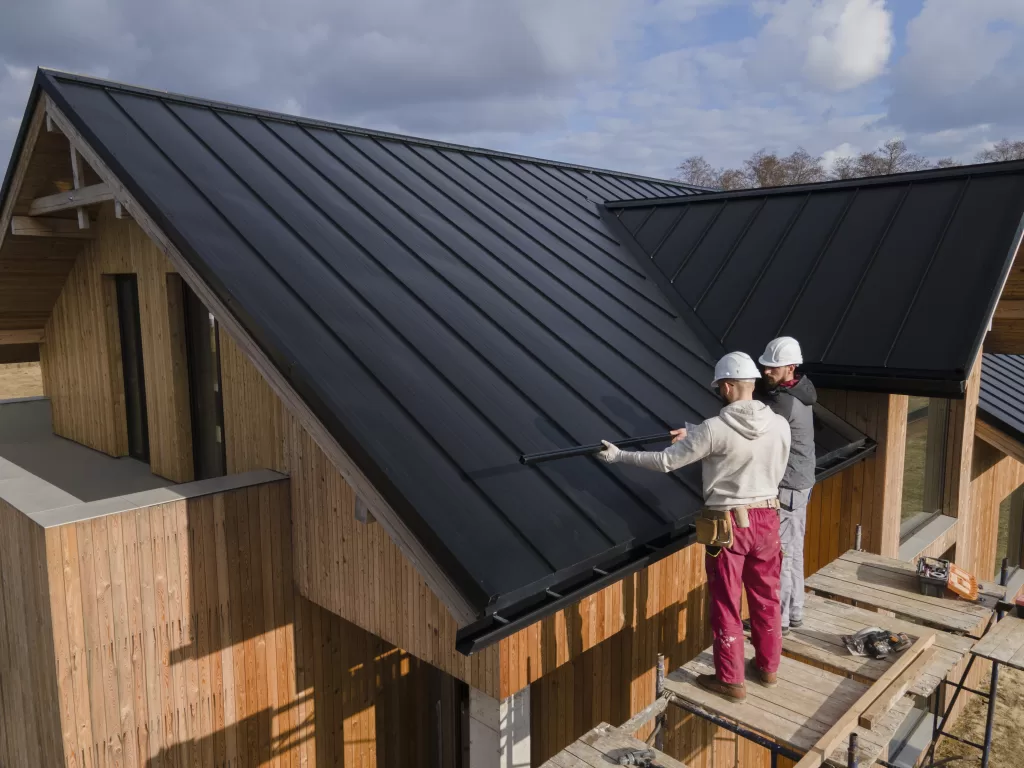Pitched roofs, also known as sloped or angled roofs, are a classic architectural feature that has been used for centuries in residential and commercial construction. Unlike flat roofs, pitched roofs have a noticeable slope, which offers various functional and aesthetic benefits. In this article, we’ll explore what pitched roofs are, the different types available, and the advantages they offer to homeowners and builders.
What is a Pitched Roof?
A pitched roof is characterized by its sloping design, which allows rainwater, snow, and debris to run off easily. The angle of the slope, known as the pitch, can vary depending on factors such as climate, architectural style, and local building codes. Pitched roofs are typically constructed using rafters, trusses, and roofing materials such as shingles, tiles, or metal panels.
Types of Pitched Roofs
- Gable Roof: Also known as a peaked or pitched roof, the gable roof is one of the most common types. It consists of two sloping sides that meet at a central ridge, forming a triangular shape. Gable roofs are known for their simplicity and excellent water runoff capabilities.
- Hip Roof: A hip roof has slopes on all four sides, with each side meeting at a ridge or hip. This design offers increased stability and wind resistance compared to gable roofs. Hip roofs are commonly used in areas prone to high winds or hurricanes.
- Mansard Roof: Named after the French architect François Mansart, the mansard roof features a double slope on each side, creating a nearly vertical lower slope and a steeper upper slope. Mansard roofs are popular for their aesthetic appeal and extra living space in the attic.
- Gambrel Roof: Similar to the mansard roof, the gambrel roof has two slopes on each side. However, the lower slope is steeper, while the upper slope is shallower. Gambrel roofs are often seen on barns and colonial-style homes.
- Saltbox Roof: The saltbox roof is characterized by its asymmetrical design, with one side of the roof being significantly longer and steeper than the other. This type of roof is common in historical New England architecture.
Advantages of Pitched Roofs
- Improved Drainage: The sloping design of pitched roofs allows rainwater, snow, and debris to drain off easily, reducing the risk of water pooling and leaks.
- Enhanced Durability: Pitched roofs are typically more durable and long-lasting than flat roofs, as they are less prone to water damage, UV exposure, and debris buildup.
- Better Ventilation: The attic space beneath a pitched roof provides natural ventilation, allowing hot air to escape during the summer months and reducing the strain on HVAC systems.
- Aesthetic Appeal: Pitched roofs offer a timeless and classic aesthetic that complements various architectural styles, from traditional to contemporary.
- Extra Living Space: Certain types of pitched roofs, such as mansard and gambrel roofs, provide additional living space in the attic or upper level of the home, making them ideal for expanding families or storage needs.
- Increased Energy Efficiency: The sloped design of pitched roofs allows for better insulation and energy efficiency compared to flat roofs, resulting in lower heating and cooling costs over time.
Conclusion
Pitched roofs offer numerous advantages in terms of functionality, durability, aesthetics, and energy efficiency. With a variety of types to choose from, homeowners and builders can select the pitched roof design that best suits their preferences, climate, and architectural style. Whether you opt for a gable, hip, mansard, gambrel, or saltbox roof, you can enjoy the benefits of this timeless and versatile roofing option for years to come.




